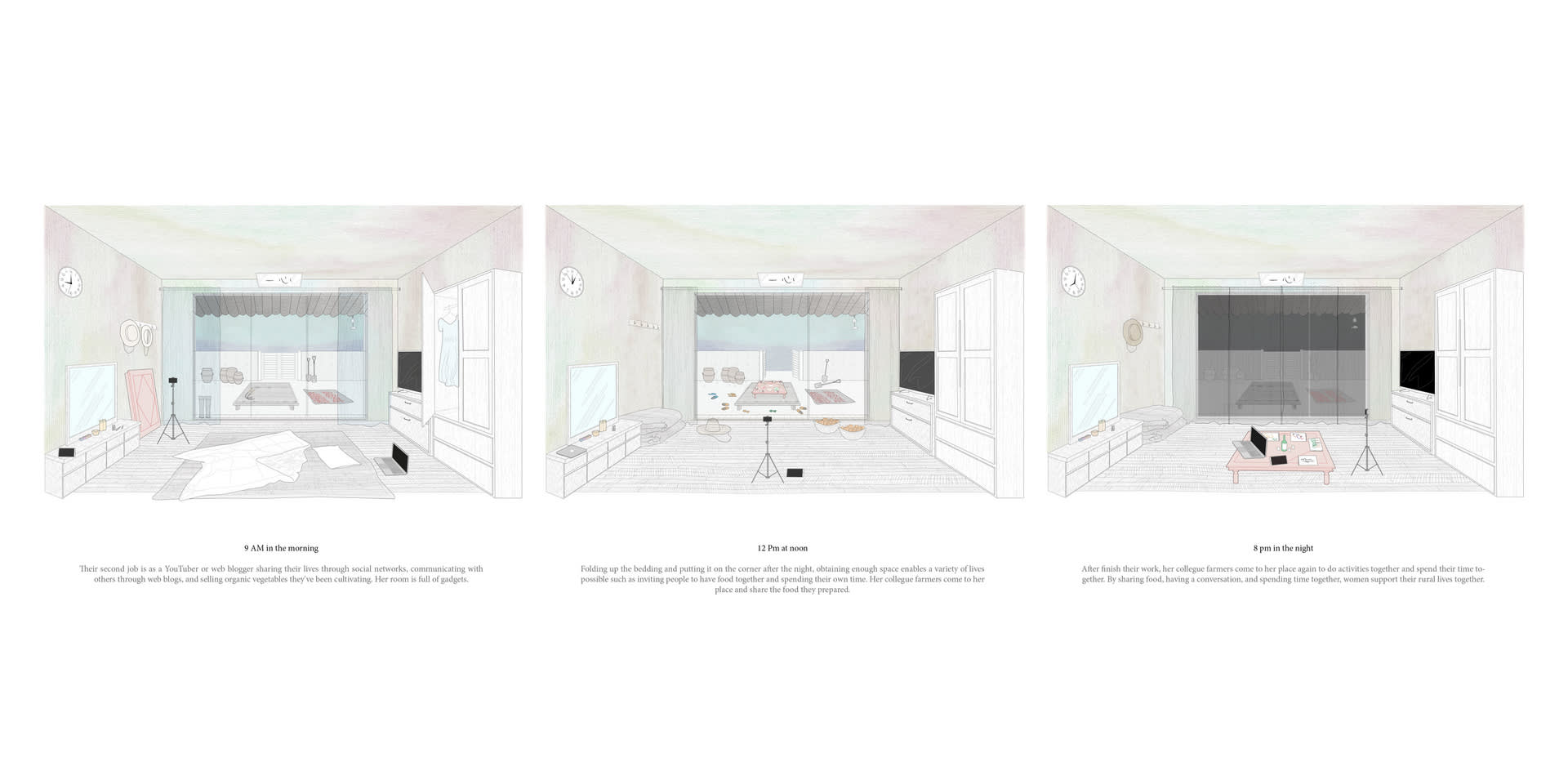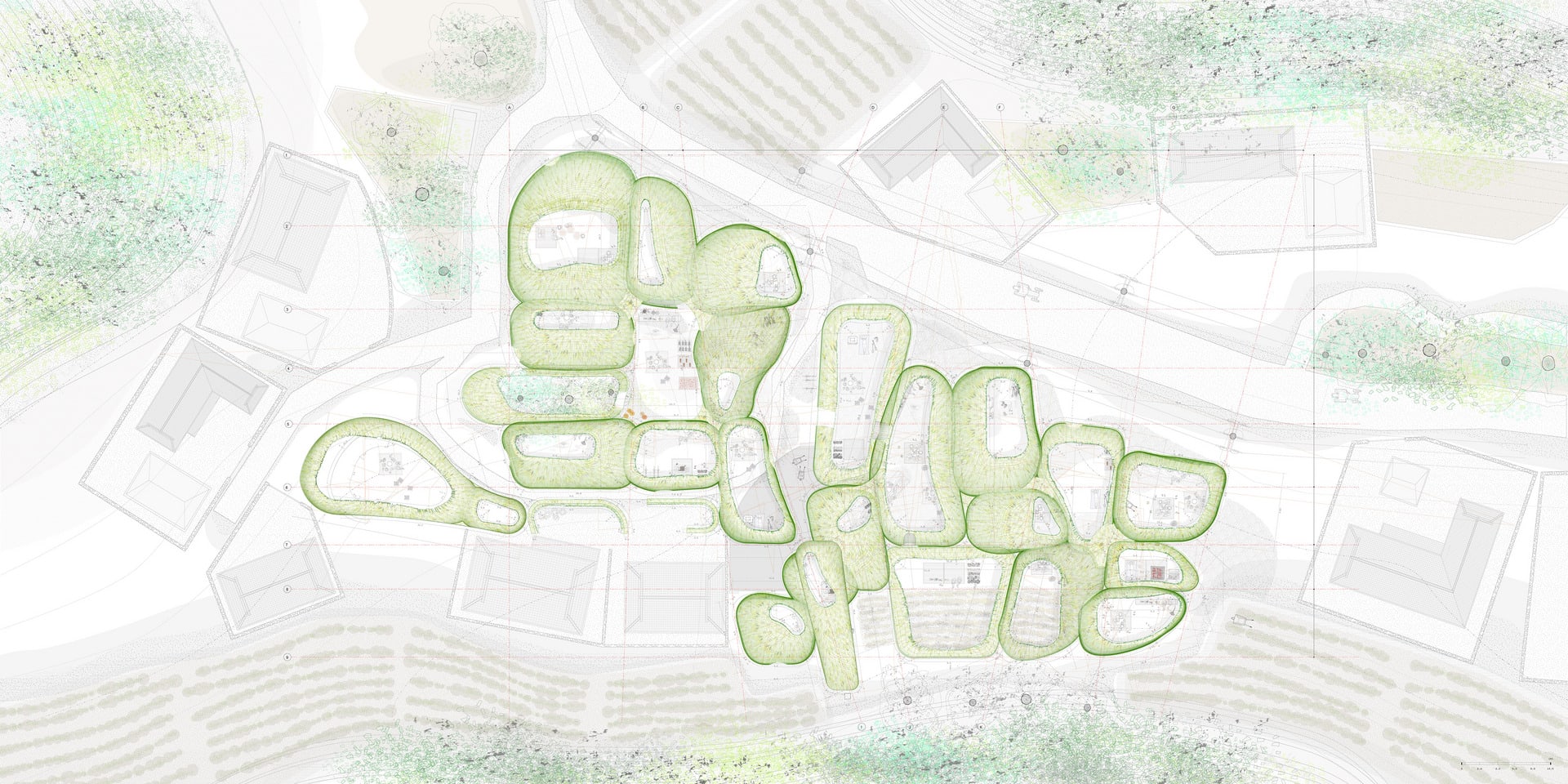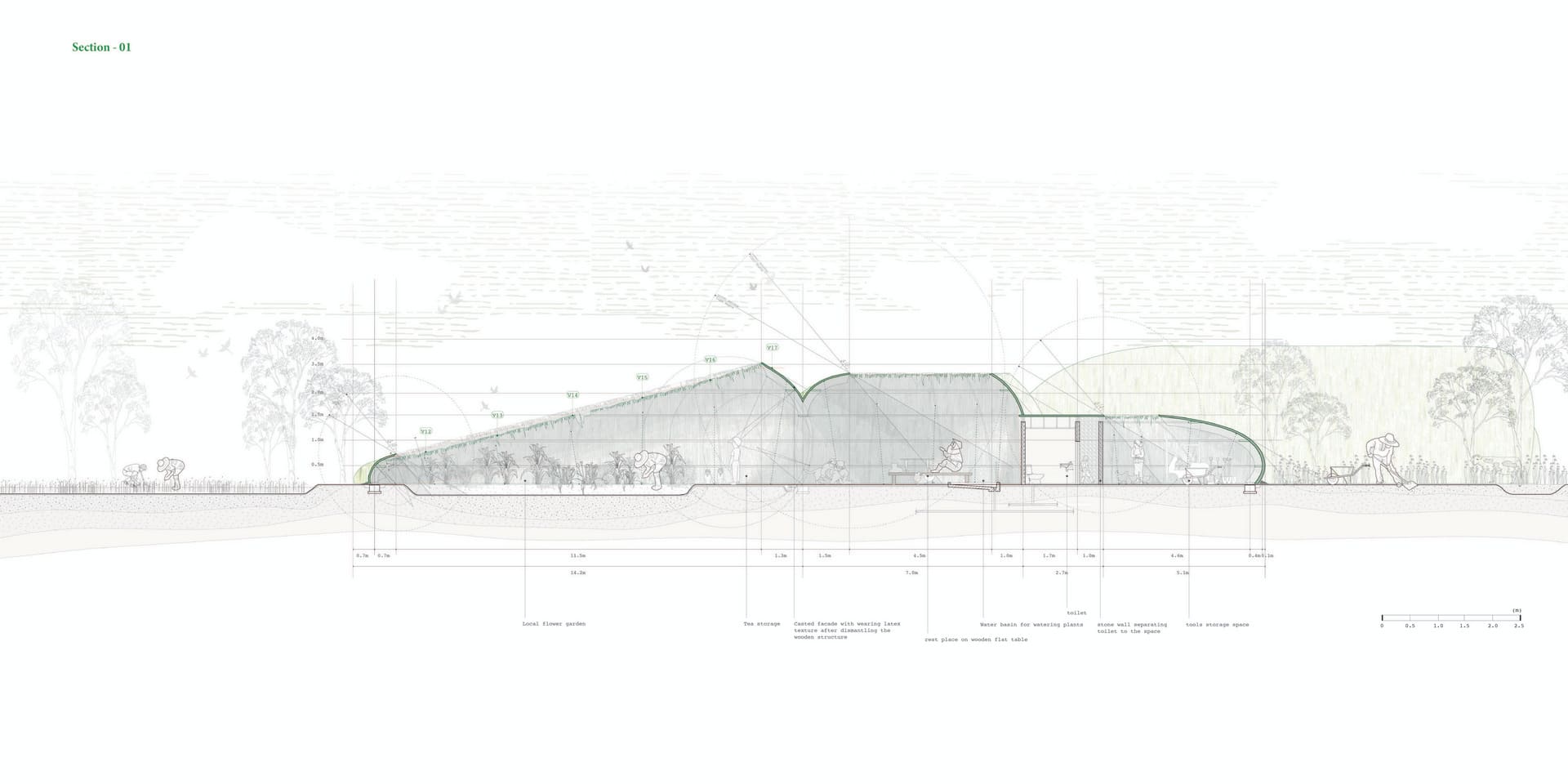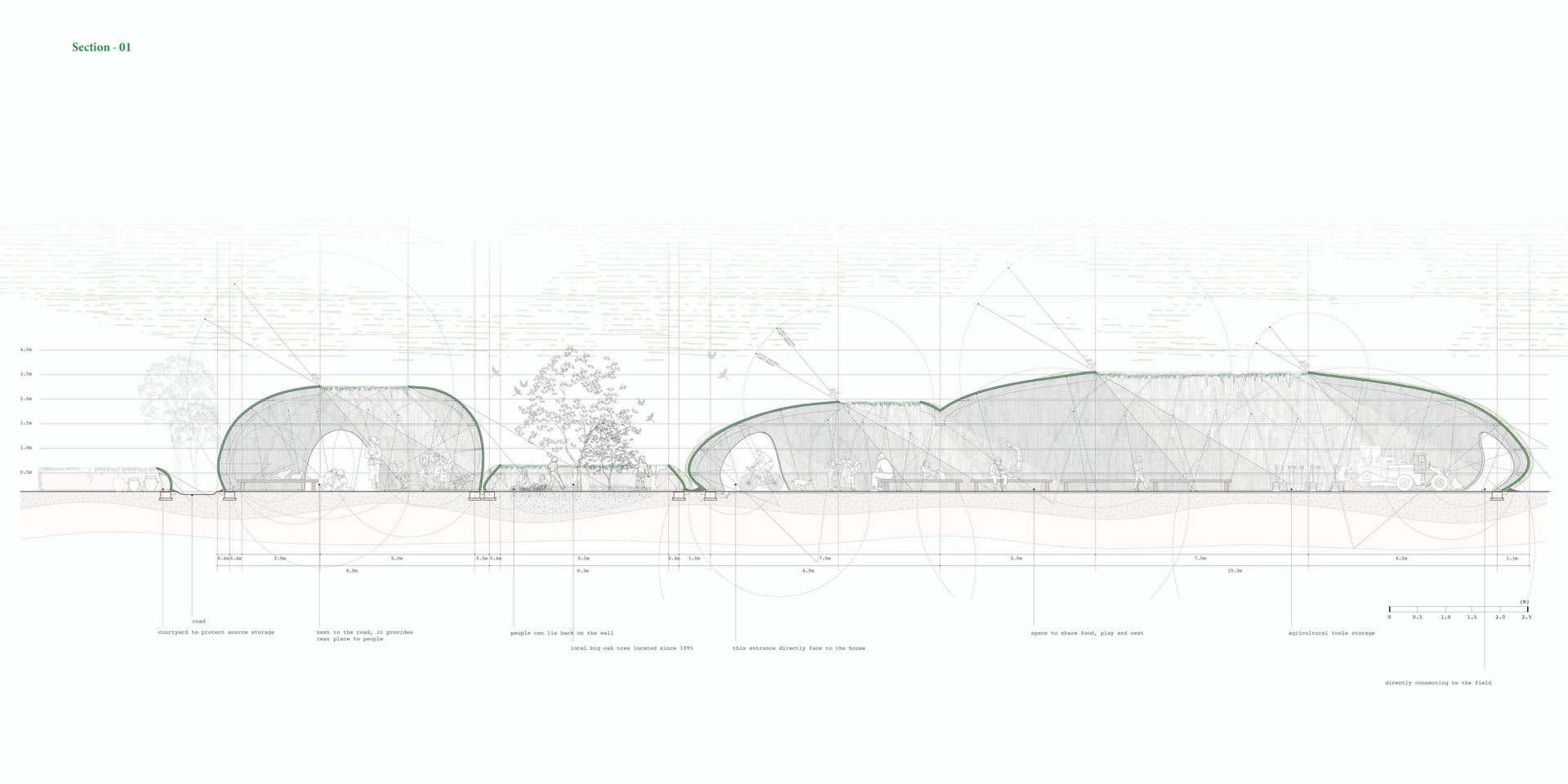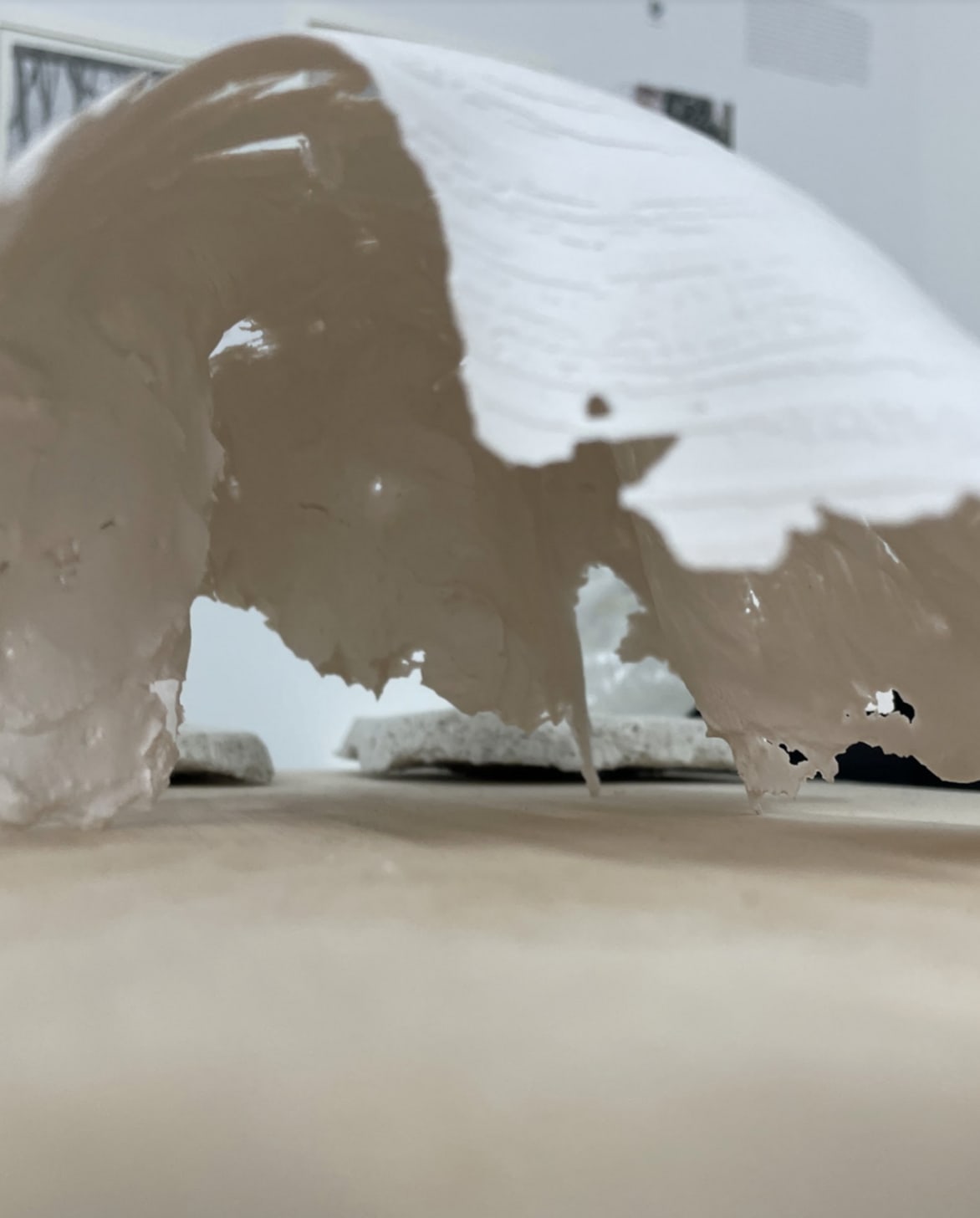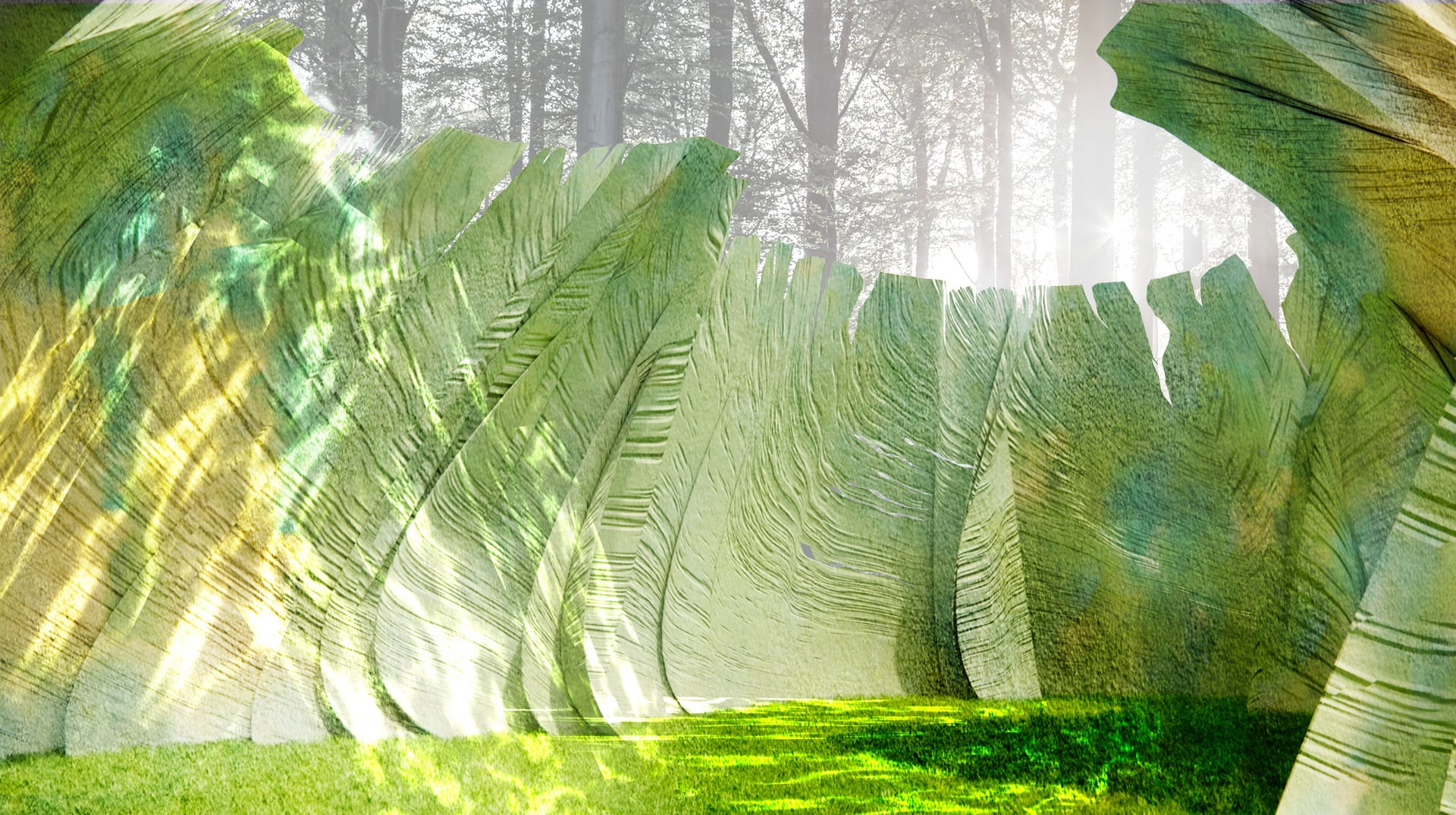Sooyeon Jeong is an architectural designer based in London and Seoul. Upon her graduation from the University of Westminster (BA), she has been exposed to historically and culturally diverse sites of various scales and programs in both academia and the field. She is keen to translate her everyday life observations into multidisciplinary practices such as drawing, writing and making. Throughout her studies at Royal College of Art, she learnt the process of transforming the observational power into spatial qualities by exploring various methods of visualisation, material experimentation and structural understanding. She may be poised in the future to make better attempts, not only in distilling the narratives but in other endeavours as well throughout her enthusiastic challenges.
Sooyeon Jeong
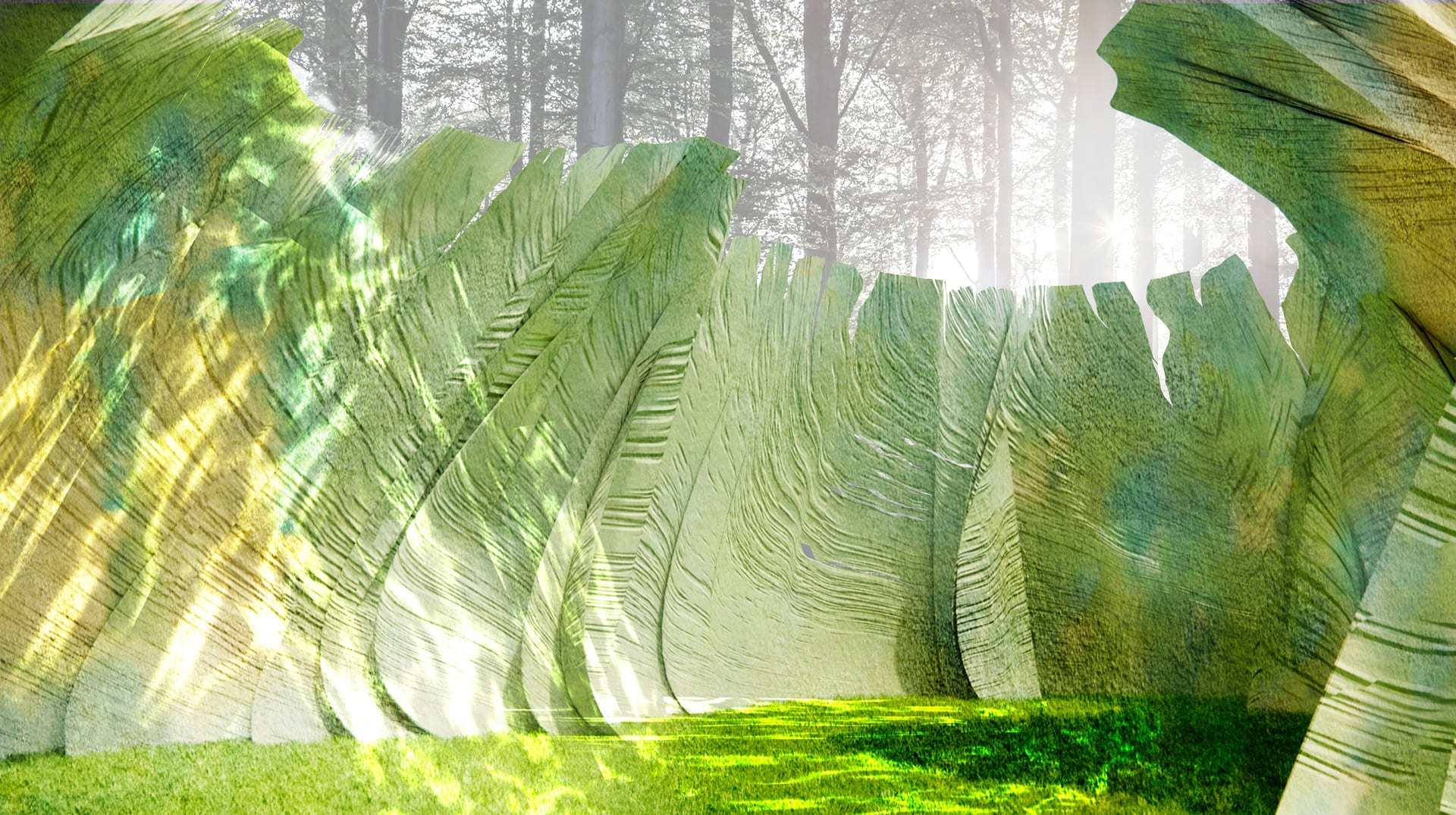

Single middle aged women migrating to farming is no longer a fad but a social phenomenon in Korea. People who feel irritated by the social structure that pursues the existing success decided a migration, where they can flexibly adjust their working hours instead of living a set schedule and enjoy the quality of life for their health in nature. Soon as they migrate with such inflated dreams, women encounter different experiences. In a male- dominated agricultural society, women’s lives are disempowered and excluded from accessing or making decisions about agricultural production. While they are constantly exposed to rude and unpleasant gazes and behaviours that can also be interpreted as an aspect of misogyny, it is difficult to find spaces and people who can speak their language. Despite long-held social unwritten rules, WWWs, an abbreviation of ‘Women ready to live Whenever Wherever’ composed of six women in their 20s and 30s in Korea, has been evolving a new form in living and working by using agricultural land as their home.
The society is a gathering of women who have only lived in rural areas, or women who have migrated to farming, or women who plan to migrate someday. This is a group that started to find out the commonality of single women living in rural areas and to clarify the relationship between rural areas and women. This meeting begun with the women who happened to live in the same rural area by chance and met to talk about the inconveniences of rural life, then planned an exhibition, and now the scale has grown up and has increased by around 200 people. Each group composed of around 10 people and scattered all around the country.
The project ‘The Green Edge’ first looks into how this new society refuses pre-defined and role-defined space to acquire a different lifestyle. Secondly, how a collective space could carve out a different quality of life for these women with a special casting technique. This is by exploring how various courtyards with different light quality challenges the blurred condition placing between the housing and the farming area as the new strategy to let for these women society conduct their lives which is already happened.
